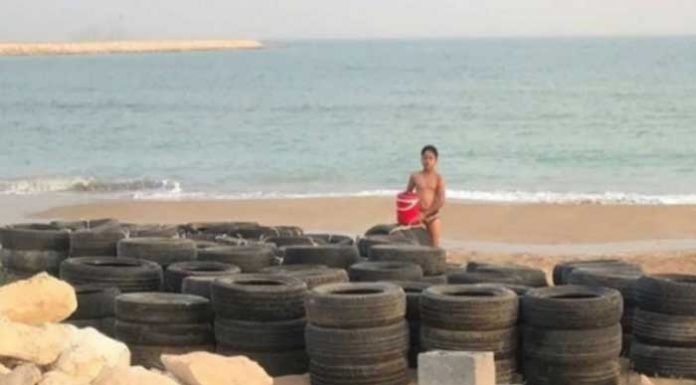Governments and private companies around the world use the artificial modular reef as part of sea and ocean conservation efforts to enhance marine life. In most countries, it is the Department of the Environment that issues licenses to government agencies and private companies to design and construct offshore or coastal artificial habitat to promote fisheries and marine life.
Most governments demand that construction materials for artificial habitats exclude most second-use materials. However, people in many countries, including Iran, use materials which lack the physical robustness and chemical composition needed to construct artificial habitats, including derelict fishing vessels, cars, tires, and concrete rubble.
Despite a campaign by environmental agencies to educate and inform local inhabitants about the harmful effects of hazardous materials on marine life, some people along the Persian Gulf coastlines continue to use plastic barrels, car tires and cement blocks to construct artificial habitats.
Environmentalists view these actions as legalized dumping. They warn that using potentially toxic materials to build artificial modular reef will not restore but rather degrade natural marine habitats and fisheries.
Marine biologists also warn that artificial habitats must be made according to the requirements of individual species and an ecosystem specific to a region; otherwise they harm instead of promoting biodiversity.
Recent footage posted on Instagram by @busherh_fishing, which reports on local news, showed a group of men in Bandar Bushehr, capital of the southern province of Bushehr, dumping a massive structure in the Persian Gulf which was made of tree branches, car tires and a cement block attached to a metal frame.
Separate footage posted on Instagram by @busherh_fishing shows a city worker in Asalouyeh, in Bushehr Province, using a water hose to clean metal garbage bins on the Persian Gulf shoreline littered with trash.
“Using scrap tires and cement blocks to construct artificial habitats and fisheries poses a serious challenge to us. These materials slowly release harmful chemicals into the water, which have adverse effects on marine life. Rubber tires contain hazardous compounds, including sulfur, zinc, black carbon, and peroxides, which are harmful to the aquatic ecosystem. The gradual accumulation of these toxic substances, called Bioaccumulation, will harm our children and us,” an Instagram post by OceanaIRAN said.
[Translated from Persian by Fardine Hamidi]


